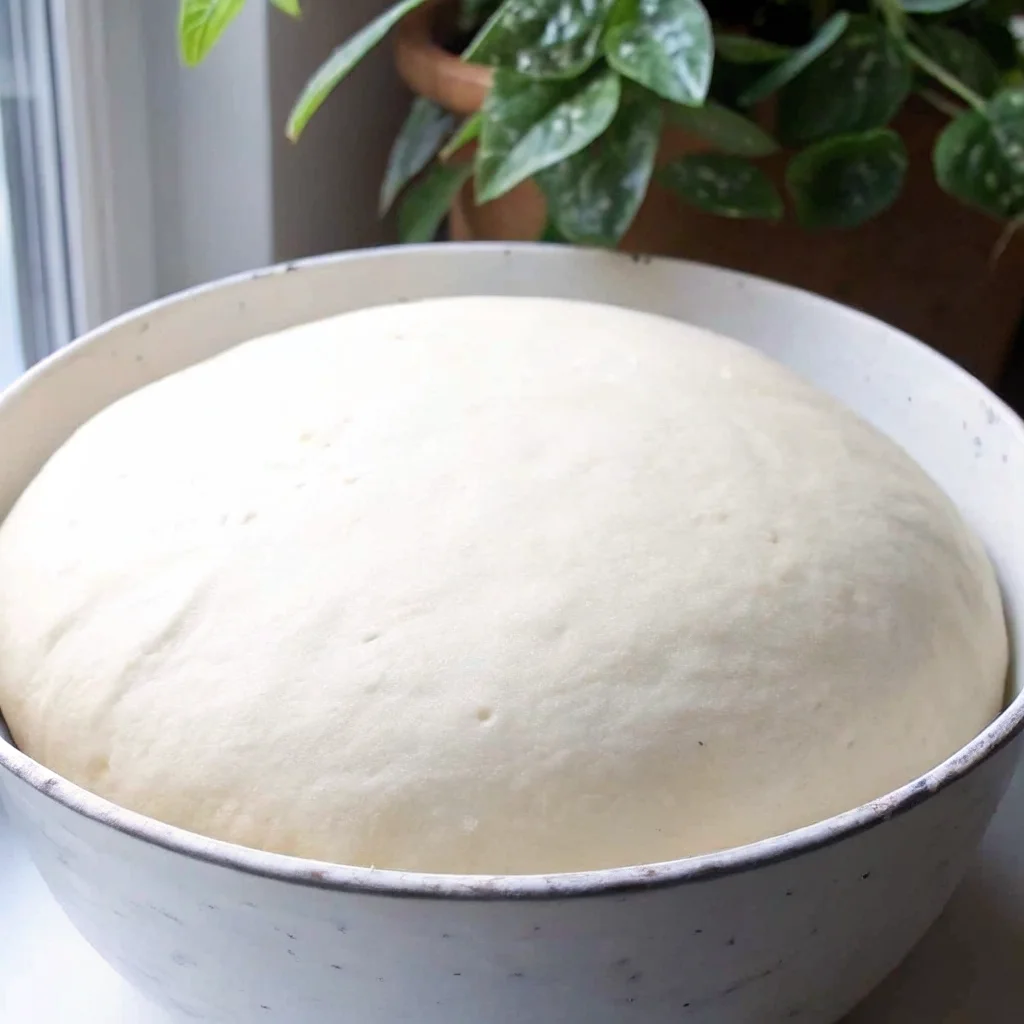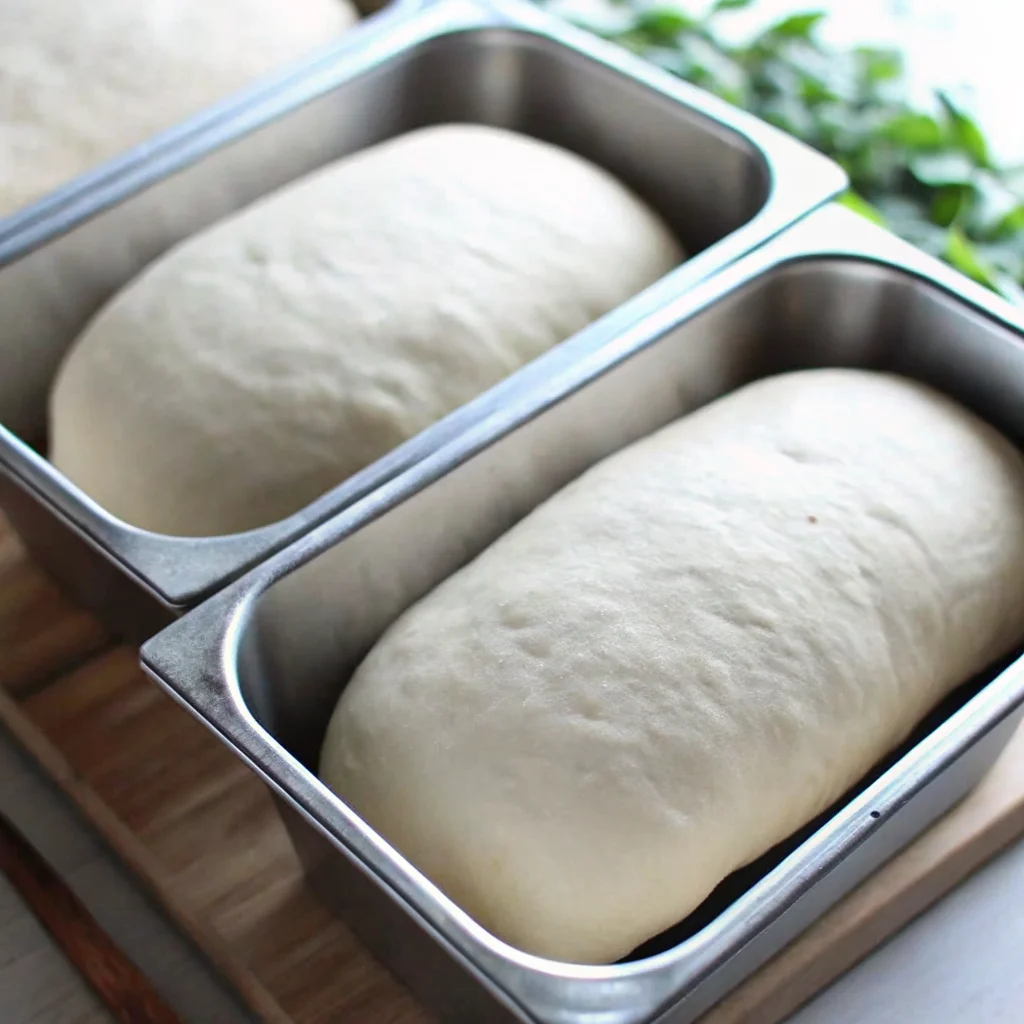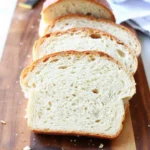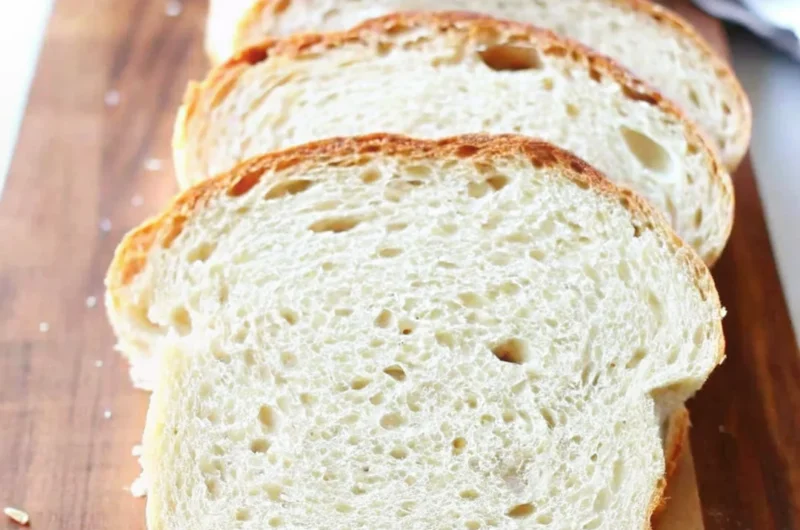Bread-making has long been considered an art form, and mastering the perfect sandwich bread recipe is an essential skill for any home baker. Homemade bread offers a texture and taste that store-bought varieties simply cannot match. The versatility of homemade sandwich bread means it works perfectly for everyday sandwiches, toast, or even fancy grilled sandwiches. In this comprehensive guide, we’ll walk you through the entire process of crafting the perfect loaf, providing expert tips, step-by-step instructions, and common variations.

Why Homemade Sandwich Bread is Better
Making sandwich bread at home brings multiple advantages:
- Fresher taste and aroma
- Complete control over the ingredients
- The joy of creating something from scratch
- Versatility: from white bread to whole grain
When it comes to crafting the perfect sandwich bread recipe, the magic lies in a few simple ingredients and techniques that elevate your loaf to new heights. But before diving into the details, it’s essential to understand the foundational elements of bread-making.
Basic Ingredients for Sandwich Bread
The simplicity of ingredients is one of the most beautiful things about bread-making. You’ll need only a handful of ingredients to get started:
- Flour: You can use all-purpose or bread flour, though bread flour gives a chewier texture.
- Yeast: Either active dry yeast or instant yeast works, but each has different proofing requirements.
- Water: Always use warm water, about 120°F for optimal yeast activation.
- Sugar: Sugar helps feed the yeast and slightly sweetens the loaf.
- Salt: Essential for flavor.
- Butter or Oil: Adds richness and moisture to the loaf.
For more information on how to properly measure flour and mix ingredients, check out this guide on measuring flour properly to ensure precision.
Step-by-Step Guide to Making Sandwich Bread
1. Preparing the Ingredients
To start your sandwich bread recipe, first gather your ingredients:
- 3 ¾ cups of flour (bread flour recommended)
- 2 teaspoons of salt
- 1 tablespoon of yeast (instant or active dry)
- 1 cup warm water
- 3 tablespoons butter, melted
- 1 egg
- 2 tablespoons sugar
Make sure to measure flour by weight, if possible. Precise measurements are key to achieving a consistent dough texture.
2. Mixing the Dough
- In a large mixing bowl, combine the flour, salt, sugar, and yeast.
- Separately, mix the warm water, butter, and egg.
- Gradually add the wet ingredients into the dry mix, stirring until the dough begins to come together.
Kneading is a crucial step that ensures your bread develops the right structure. You can either knead the dough by hand or use a stand mixer. Hand kneading will take about 10 minutes, whereas a mixer will only take 5-6 minutes.

3. First Rise (Proofing)
Once you have a smooth dough, place it in a greased bowl, cover with a cloth or plastic wrap, and let it rise for about 1-2 hours until doubled in size. Proofing times may vary based on the temperature of your kitchen.
The perfect proof gives your sandwich bread its light, airy texture, so don’t rush this step.
For more detailed advice on proofing and the importance of temperature, refer to this yeast and bread-making guide.
4. Shaping the Loaf
Once proofed, punch down the dough and turn it out onto a floured surface. Gently shape the dough into a rectangle, then roll it into a log shape, tucking the ends under. Place the shaped dough into a greased 9×5-inch loaf pan.
5. Second Rise
Cover the loaf pan and allow the dough to rise again for another 45-60 minutes, or until it reaches the top edge of the pan. The second rise helps develop the final shape and structure of the bread.
6. Baking
Preheat your oven to 375°F (190°C). Bake the bread for 35-40 minutes until the top is golden brown. You’ll know the bread is done when it sounds hollow when tapped on the bottom.
Let the bread cool on a wire rack for at least 30 minutes before slicing. This ensures that the internal crumb sets properly.
Common Variations of Sandwich Bread
While the classic white bread is a favorite, there are several variations you can explore to suit different tastes and preferences:
- Whole Wheat Sandwich Bread: Substitute half or all of the white flour with whole wheat flour for a more nutritious loaf.
- Multigrain Bread: Add seeds, oats, or grains to the dough for a heartier texture.
- Honey Oat Bread: Replace sugar with honey for a more complex flavor and sprinkle oats on top for a rustic look.
Pro Tip: If you want to make your bread extra soft, consider adding a little more butter or a tablespoon of powdered milk to the dough.
Troubleshooting Common Bread-Making Issues
Even seasoned bakers can encounter challenges when making sandwich bread. Here are some tips for solving common problems:
- Dense Bread: This could be due to insufficient kneading or over-proofing. Make sure you knead until the dough is elastic, and don’t allow the dough to over-rise.
- Crumbly Texture: Too much flour or not enough water can cause dryness. Be sure to measure carefully and adjust as needed.
- Uneven Rise: Ensure even temperatures during proofing, and don’t forget to knead thoroughly to distribute the yeast evenly.

Expert Tips for Perfect Sandwich Bread
Here are some expert tips to help you perfect your sandwich bread recipe:
- Use Bread Flour for Chewier Texture: Bread flour has more protein than all-purpose flour, which helps with the gluten formation, giving the bread a chewier texture.
- Add Steam for a Crusty Loaf: Placing a shallow pan of water in the oven during baking will create steam, helping to form a crisp crust.
- Egg Wash for Golden Top: Brushing the top of the loaf with a beaten egg before baking gives it a beautiful golden finish.
FAQs About Making Sandwich Bread
Can I use bread flour instead of all-purpose flour?
Yes, bread flour has a higher protein content, which helps with gluten development and gives the bread a chewier texture.
How do I know when the dough has risen enough?
A good rule of thumb is to let the dough rise until it has doubled in size. Press your finger lightly into the dough; if the indentation remains, it’s ready to shape.
What’s the best way to store homemade sandwich bread?
To store, allow the bread to cool completely. Then, wrap it tightly in plastic wrap or foil and store at room temperature. For longer storage, freeze the loaf.
Can I make gluten-free sandwich bread?
Yes, you can substitute a gluten-free flour blend, but you’ll need to adjust hydration and proofing times. Gluten-free bread tends to be more delicate, so handle it gently during shaping and proofing.
Why is my bread crust too hard?
A hard crust can be caused by baking at too high a temperature or over-baking. Make sure your oven temperature is accurate and bake until just golden.
Why You Should Try Making Sandwich Bread at Home
Making your own sandwich bread is rewarding and allows you to control the quality of your ingredients. It’s fresher, tastier, and more customizable than anything you can buy in the store. Plus, the process itself is therapeutic, and the aroma of freshly baked bread is an added bonus.
Final Thoughts
Whether you’re a seasoned baker or just getting started, mastering the perfect sandwich bread recipe opens up a world of possibilities. From adding personal touches to experimenting with different flours, the journey of bread-making is as rewarding as it is delicious.
Take control of your kitchen, and start crafting your own loaves of homemade sandwich bread. You’ll never look back!
Print
Ultimate Guide to Making the Best Sandwich Bread Recipe
- Total Time: 35-40 minutes
- Yield: About 3 hours 1x
Description
This homemade sandwich bread is soft, fluffy, and perfect for everything from everyday sandwiches to gourmet grilled cheese. With simple ingredients and easy-to-follow steps, you’ll never want store-bought bread again!
Ingredients
-
3 ¾ cups bread flour (or all-purpose flour)
-
2 teaspoons salt
-
1 tablespoon yeast (instant or active dry)
-
1 cup warm water (about 120°F)
-
3 tablespoons butter, melted
-
1 egg
-
2 tablespoons sugar
Instructions
Prepare the Dough
-
In a large mixing bowl, combine flour, salt, sugar, and yeast.
-
In a separate bowl, mix warm water, melted butter, and egg.
-
Gradually add wet ingredients to the dry ingredients, stirring until the dough begins to come together.
2. Kneading the Dough
-
Knead the dough for about 10 minutes by hand (or 5-6 minutes in a stand mixer) until smooth and elastic.
3. First Rise (Proofing)
-
Place the dough in a greased bowl, cover with a cloth, and let it rise for 1-2 hours until doubled in size.
4. Shape the Loaf
-
Punch down the dough and shape it into a rectangle.
-
Roll it into a log, tucking the ends under, and place it into a greased 9×5-inch loaf pan.
5. Second Rise
-
Cover and let the dough rise again for 45-60 minutes, or until it reaches the top of the pan.
6. Baking
-
Preheat oven to 375°F (190°C).
-
Bake for 35-40 minutes until golden brown.
-
Remove from the oven and let cool on a wire rack for at least 30 minutes before slicing.
Notes
-
Use bread flour for a chewier texture.
-
For a soft crust, brush the top with melted butter after baking.
-
Store at room temperature in an airtight container for up to 3 days or freeze for longer storage.
- Prep Time: 15 minutes
- Cook Time: 2-3 hours
- Category: Bread
- Method: Baking
- Cuisine: American
Keywords: Homemade bread, sandwich loaf, soft bread, easy bread recipe






